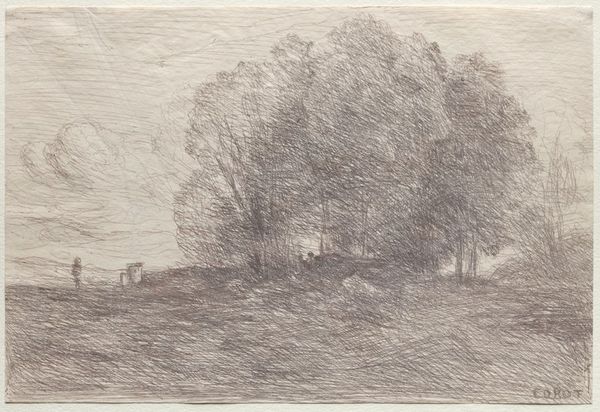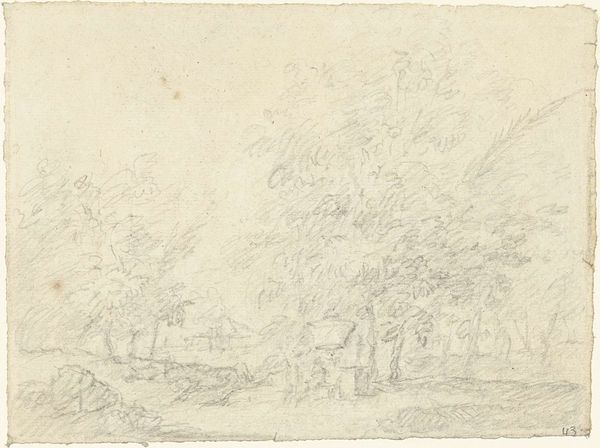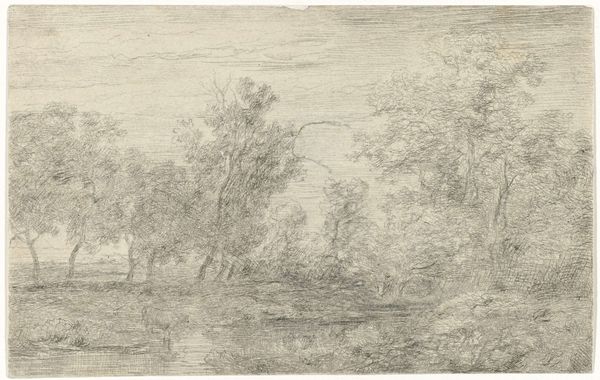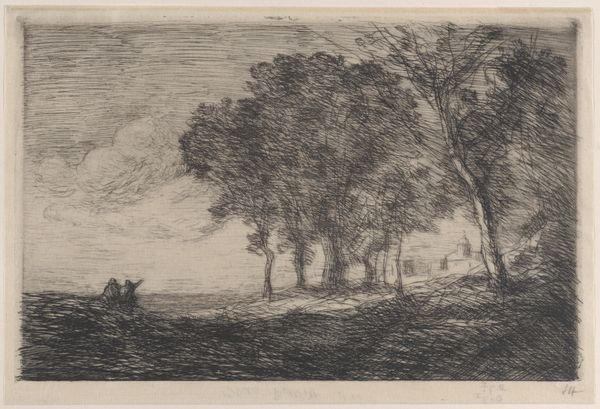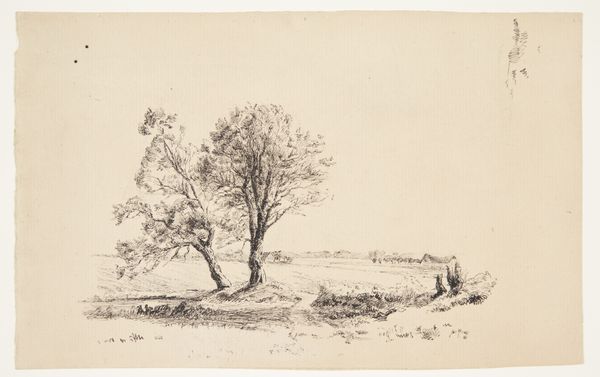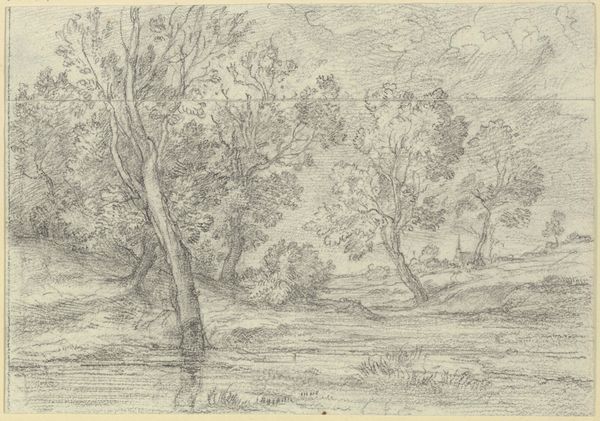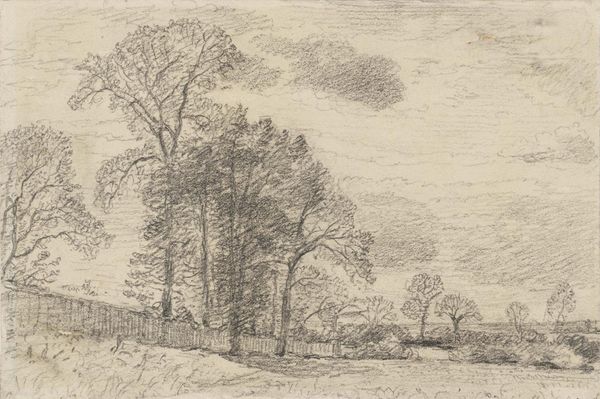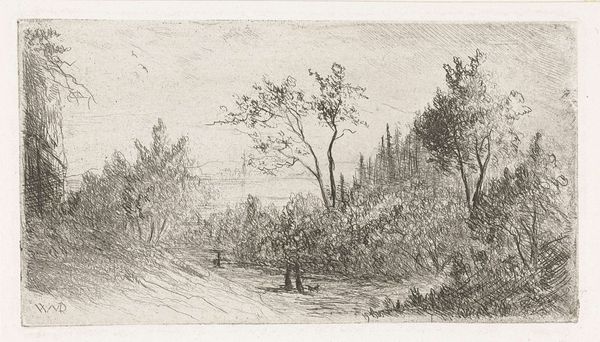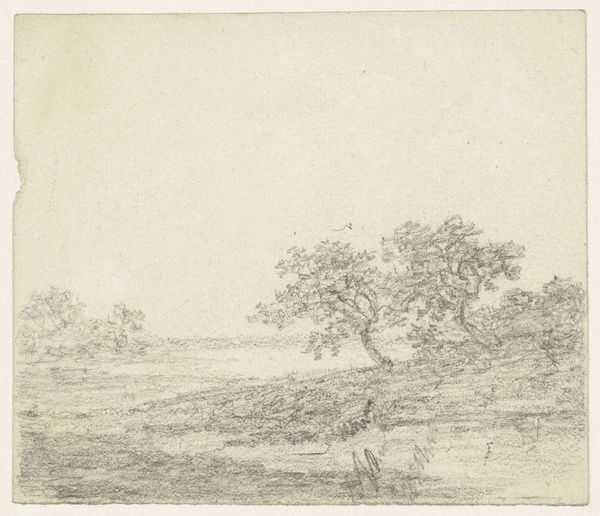
Dimensions: height 155 mm, width 232 mm
Copyright: Rijks Museum: Open Domain
Curator: Welcome! Here we have Camille Corot's "Groep bomen bij Belle Foriere", a landscape drawing from 1858, now held at the Rijksmuseum. Editor: There’s a real quietness to this piece. The overall tone is muted, soft, with a hazy almost dream-like quality. You can almost feel the breeze rustling through the trees. Curator: Corot’s known for bridging Romanticism and Impressionism, and this work really exemplifies that. Note the meticulous detail in the trees, while also capturing the overall atmosphere. Think of the social context – a rapidly industrializing France, with artists seeking solace in nature, reflecting on traditional life. Editor: And you see that echoed in the medium, right? Pencil, such an accessible material, bringing that desire for connection with everyday experience. You think about the physical act of making the marks on the paper, it really emphasizes the connection of human labor and artistic creation. Curator: Absolutely. I am curious about the small figures almost blurred within the composition. I believe those elements are suggestive of the societal shifts underway, the ordinary rural folk juxtaposed against nature’s grandeur, almost like silent witnesses of transformation. Editor: Right, Corot focuses on the simplicity and inherent beauty of ordinary scenes, which speaks volumes about his priorities in terms of subject and his emphasis on the immediacy of the creative gesture. The landscape tradition has its own socio-economic dimensions. It isn't separate. Curator: Exactly. Looking at it today prompts questions about our own relationship to landscape and what spaces remain to reflect on shared experiences. This is especially potent given conversations around class, and land access. Editor: Well, the subdued quality pushes me to see the value in handmade expression as it existed at this time, not as purely decorative or sentimental but as integral to historical and social dynamics. Curator: It leaves one contemplating the connection between us and nature – how far we’ve drifted, but perhaps not without opportunities to re-evaluate. Editor: Yes. Corot's ability to render this landscape accessible using this modest material invites one to reflect on the simple, crucial aspects of our existence, which feels rather pressing now.
Comments
No comments
Be the first to comment and join the conversation on the ultimate creative platform.
